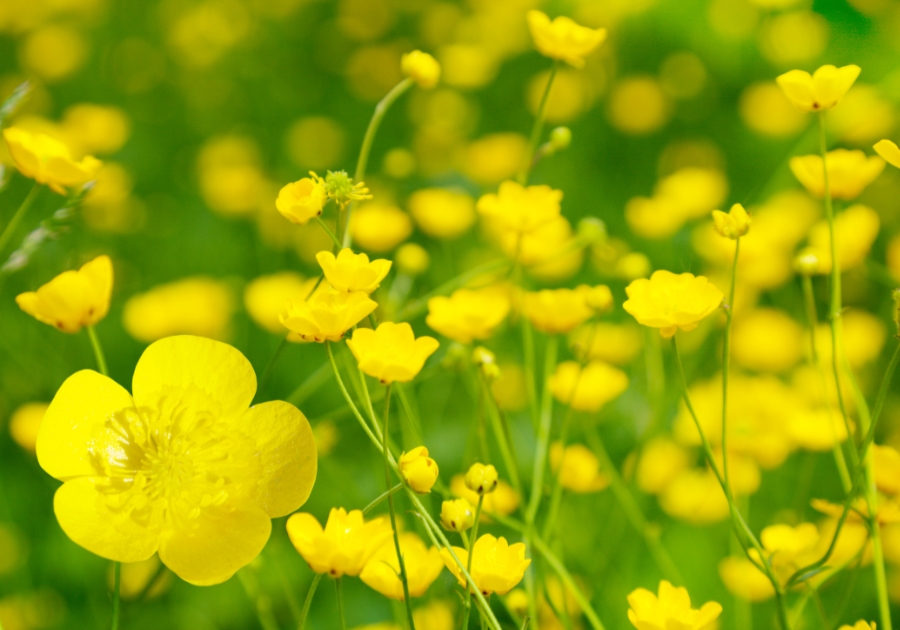All Ranunculus (buttercup) species are poisonous when eaten fresh, but their acrid taste and the blistering of the mouth caused by their poison means they are usually left uneaten. Poisoning in livestock can occur where buttercups are abundant in overgrazed fields where little other edible plant growth is left, and the animals eat them out of. Scientific Name: Ranunculus spp. Common Name: Buttercup, Crowfoot. Species Most Often Affected: cattle, goats, horses. Poisonous Parts: all. Primary Poisons: protoanemonin. Questions possibly pertaining to Ranunculus spp.: Have you ever heard cattle dying from eating buttercup? Are buttercups dangerous to horses? Are buttercups dangerous to horses? Buttercups are poisonous to horses if eaten fresh, but a horse would need to eat large amounts to die from eating them. Seek professional advice on spraying to remove from grazing areas. Dried buttercups are harmless in hay. Oak trees pose a particular threat to horses when they drop their acorns in the autumn.


Toxicity to pets
Buttercup, of the Ranunculus family, is commonly called Butter cress and Figwort. These plants are found throughout the United States. Most are weeds found in overgrazed pastures, meadows, and fields. A few varieties are grown as ornamental plants. Mixmeister studio free. The plants contain the chemical ranunculin, which, when crushed or chewed, becomes the toxin protoanemonin. Protoanemonin is a bitter-tasting oil that irritates the mucous membranes of the gastrointestinal tract, and is poisonous to horses, cats, and dogs. The flower part contains the highest amount of toxin. Thankfully, buttercup generally doesn’t pose a serious threat because the toxin’s bitter taste and ability to cause mouth blisters limits the amount an animal will eat. However, poisoning can occur in overgrazed pastures where there are little to no other plants for horses to consume. When ingested, it can result in redness and swelling of the mouth, drooling, vomiting, diarrhea, and weakness. In larger amounts, ingestion by animals can result in blood-tinged urine, tremors, and rarely, seizures.
Buttercup Flower Poisonous To Humans
In horses, signs may not be seen for 1-2 days, depending on the amount ingested. Nose, lips, face, and skin may blister or swell after direct contact with plant. Blisters in the mouth, oropharynx, and esophagus also are common. Other signs include excessive salivation, an irritated gastrointestinal tract, colic, and bloody diarrhea. Tremors, seizures, and paralysis occur in rare cases. 64 bit open office for mac downloadcleverbm.
Are Buttercups Poisonous To Cats
Content written by: Dr. Lynn Hovda, DVM, RPH, MS, DACVIM, Director of Veterinary Services, Pet Poison Helpline


Comments are closed.